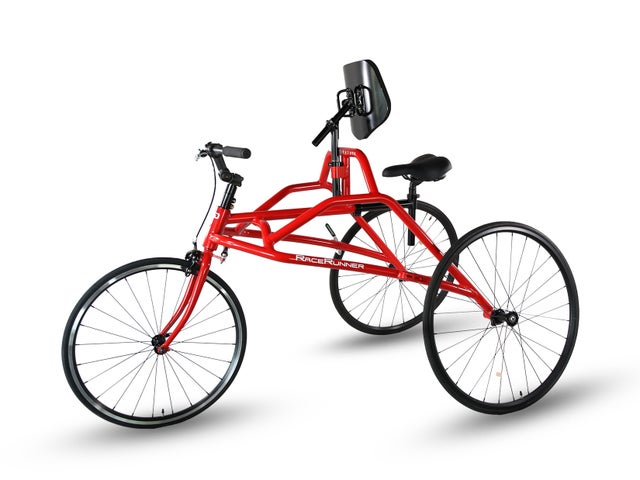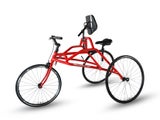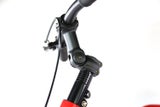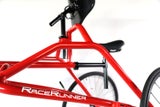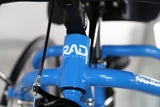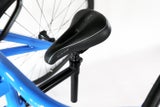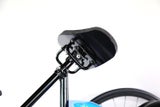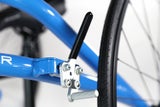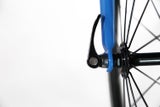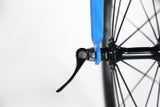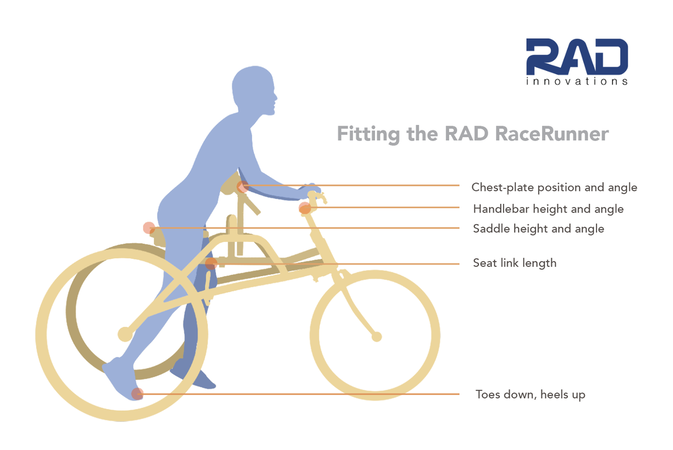- All Products
- >
- RAD RaceRunner
- >
- RAD RaceRunner Extra Large
RAD RaceRunner Extra Large
SKU:
$1,850.00
$1,850.00
Unavailable
per item
RAD RaceRunner Extra Large
Dormant Red
The RAD RaceRunner is a three-wheeled running trike with chest support. It is designed for children and adults with balance or mobility issues, such as cerebral palsy and muscle weakness. The RAD RaceRunner can help runners achieve their exercising goals - be it recreation, competition, or rehabilitation.
Read more about its usage and features here.
Specs:
- Front wheel: 24"
- Rear wheels: 700c
- Saddle height: 31.5" to 34.5"
- User max height: 76"
- User max weight: 220 lb
- The RAD droplink, an optional accessory that offers easy wheelchair access, can be ordered separately.
Important Note
We highly suggest that you contact us before purchasing a RaceRunner online in order to get personalized custom accessories and a free consultation.
International Purchasing
For all international orders, please reach out to our team for a detailed quote and shipping solutions.
3 available
Fitting the RAD RaceRunner
Guiding Principles
1. Every runner is different. As the runners grow and their abilities change, the fitting should be adjusted accordingly.
2. Comfort versus performance. The graph above shows the most common fitting. Some runners prefer a more upright position as it reduces pressure on neck muscles, diaphram and breasts. But a more forward leaning position may allow a rider to run faster, alleviate discomfort on the groin, and increase stability. Balancing comfort and performance is a matter of preference, and the bottom line is safety.
3. Experiment with the settings. It may take several tries to find the sweet spot. Experiment with positions and angles of the different pieces. Consider extra support such as body straps, heavier-cushioned chest-plates, or a droplink for easier transfers. The goal is to find a fit that enables the runner to run independently. Remember, put the parking brake on before fitting!
Adjustments
1. Saddle position. Adjust the saddle height, angle and seat post length so that you can stand on the balls of your feet with your heels up. You should be able to propel yourself and glide forward by kicking your legs back without losing control or balance. If you are new to RaceRunning, or are not able to tiptoe, you can lower the seat until you feel comfortable.
2. Chest-plate. The chest-plate can move in two ways: up and down or in and out towards you. You can also change the angle. It should rest between your abdomen and breasts. When you put your body weight on the plate and hands on the handlebar, your airway should not feel heavily compressed. If you have difficulty breathing, stop running and adjust the position or angle again.
3. Handlebar. Your shoulder and upper body should feel relaxed when your hands are on the
handlebar. Adjusting the handlebars down and away can help put you in a performance stance. Up and towards you will bring you more upright. If the runner has limited grip, they can tap the self-centering handlebars to steer.
1. Every runner is different. As the runners grow and their abilities change, the fitting should be adjusted accordingly.
2. Comfort versus performance. The graph above shows the most common fitting. Some runners prefer a more upright position as it reduces pressure on neck muscles, diaphram and breasts. But a more forward leaning position may allow a rider to run faster, alleviate discomfort on the groin, and increase stability. Balancing comfort and performance is a matter of preference, and the bottom line is safety.
3. Experiment with the settings. It may take several tries to find the sweet spot. Experiment with positions and angles of the different pieces. Consider extra support such as body straps, heavier-cushioned chest-plates, or a droplink for easier transfers. The goal is to find a fit that enables the runner to run independently. Remember, put the parking brake on before fitting!
Adjustments
1. Saddle position. Adjust the saddle height, angle and seat post length so that you can stand on the balls of your feet with your heels up. You should be able to propel yourself and glide forward by kicking your legs back without losing control or balance. If you are new to RaceRunning, or are not able to tiptoe, you can lower the seat until you feel comfortable.
2. Chest-plate. The chest-plate can move in two ways: up and down or in and out towards you. You can also change the angle. It should rest between your abdomen and breasts. When you put your body weight on the plate and hands on the handlebar, your airway should not feel heavily compressed. If you have difficulty breathing, stop running and adjust the position or angle again.
3. Handlebar. Your shoulder and upper body should feel relaxed when your hands are on the
handlebar. Adjusting the handlebars down and away can help put you in a performance stance. Up and towards you will bring you more upright. If the runner has limited grip, they can tap the self-centering handlebars to steer.

